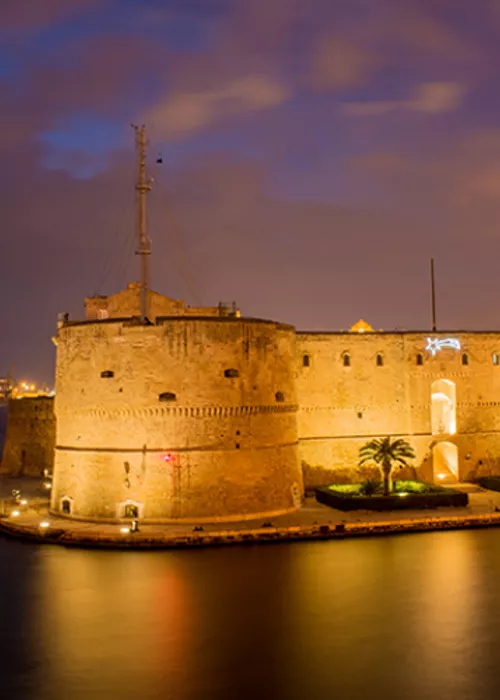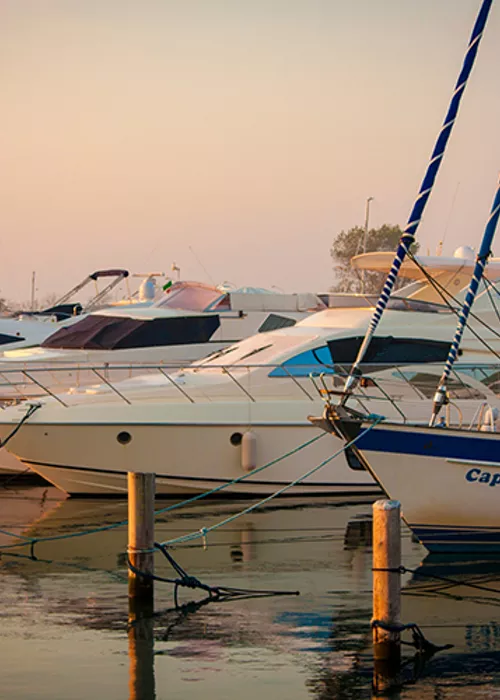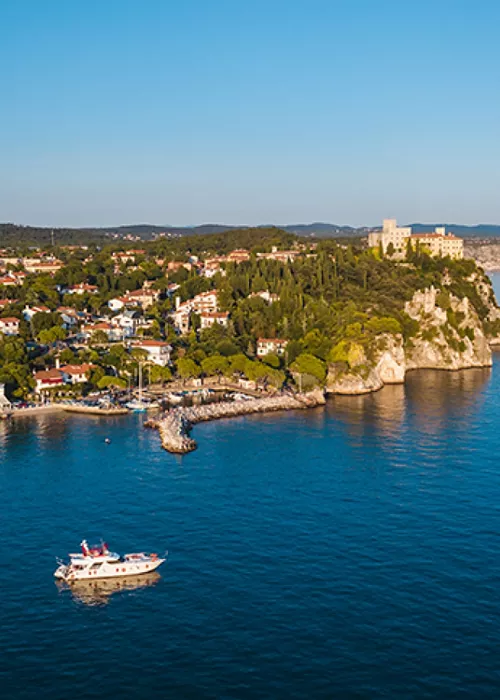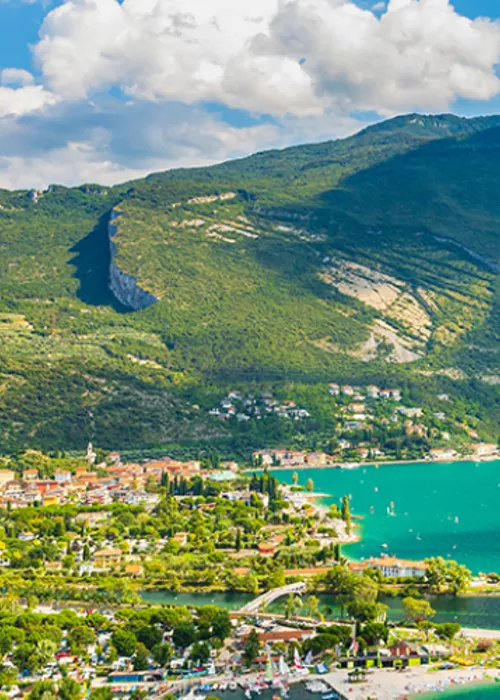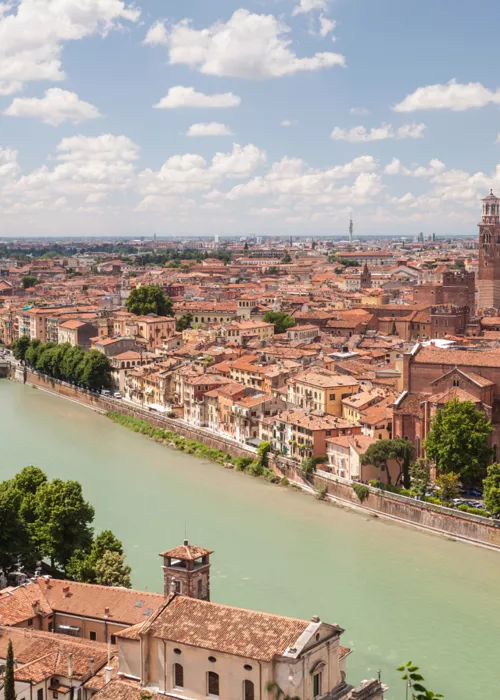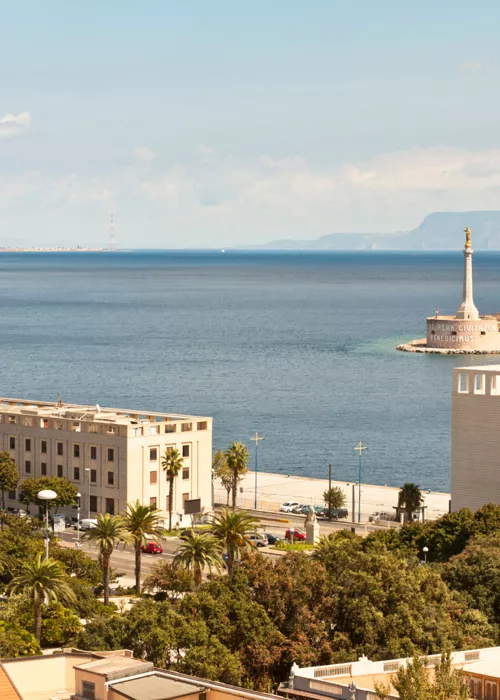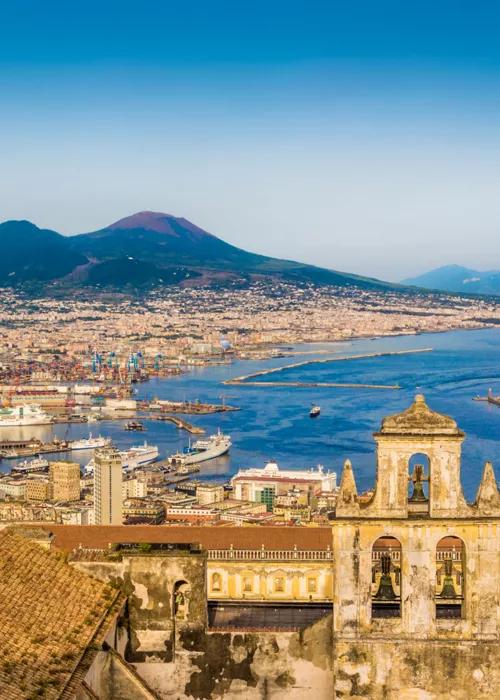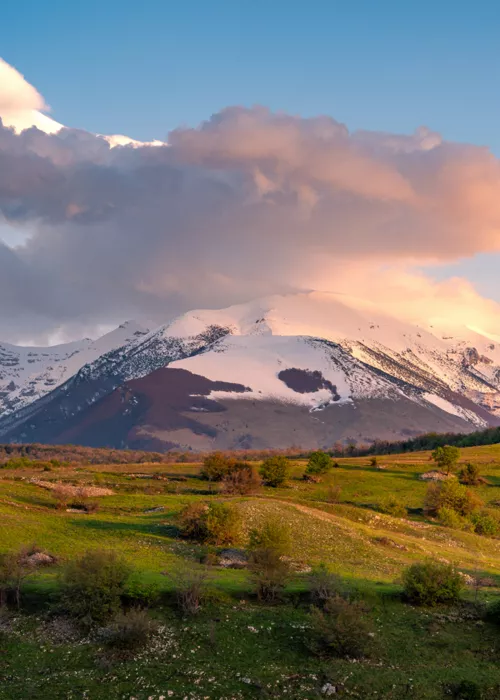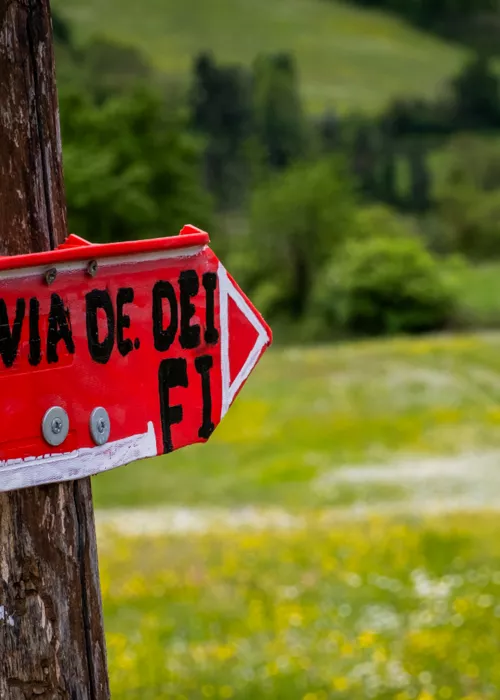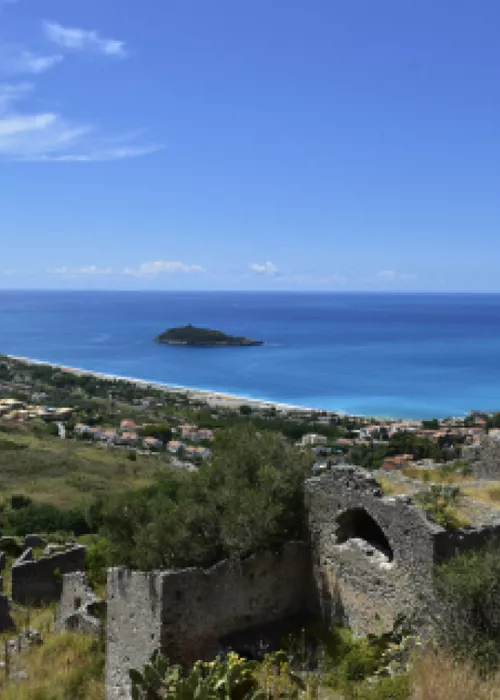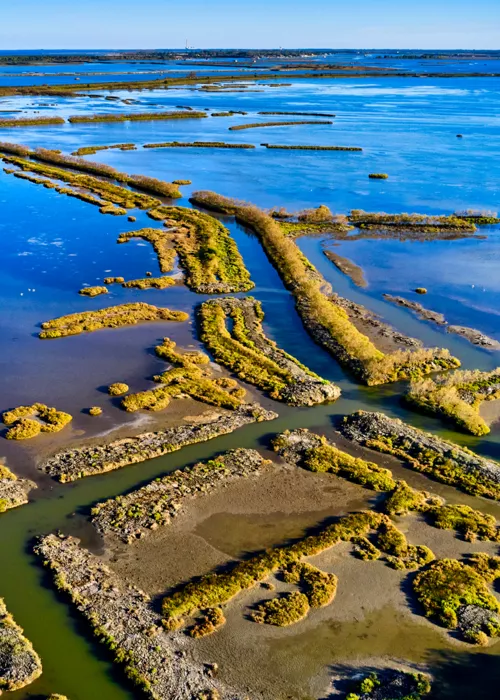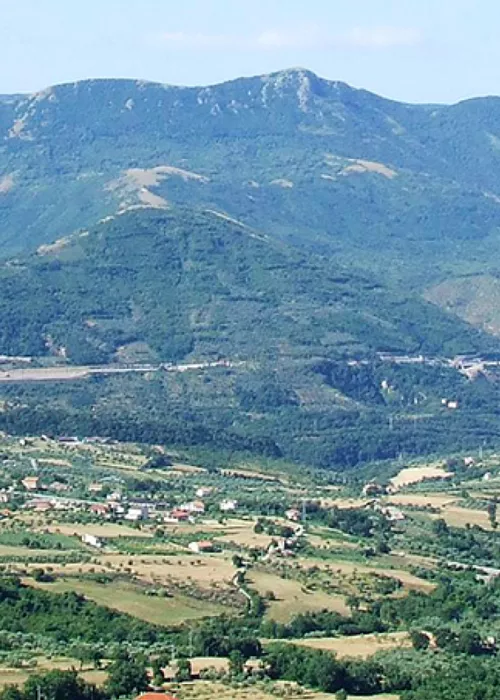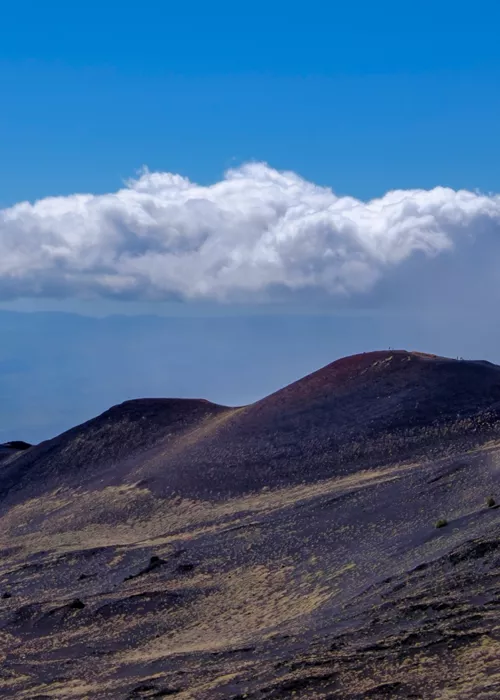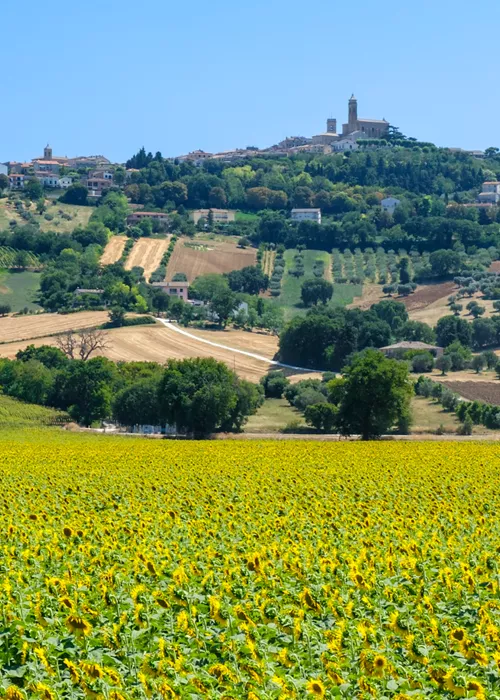From Castro to Crotone crossing the Ionian Sea

The itinerary along the Aeneas route starts from the Salento peninsula, more precisely from Castro, in the province of Lecce, the Trojan prince's first port of call. These are the "breezes invoked" in the Virgilian description that lead Aeneas and give him a glimpse of a port, on whose rock the temple of Minerva appears. Witness of the various peoples who arrived at these coasts, the Church of Maria Santissima Annunziata, rebuilt in the Norman period (1171) on a previous Byzantine churchwhere a pagan place of worship once stood, still preserves the remains of the previous basilica on the side façade. Before setting sail, don't miss out on a visit to the medieval Aragonese Castle, rectangular in shape with four corner towers, a moat and drawbridge, and the Archaeological Museum of Castro (MAR), which has dedicated a section to Aeneas' journey, and take advantage of the many places to enjoy some typical dishes of Salento cuisine. The boat itinerary continues by crossing the Ionian Sea to Capo Colonna, in Calabria, where in book III of the Aeneid, the Trojan refugees see the Sanctuary of the goddess Lacinia: this is the temple of Hera, the most famous of Magna Graecia, located on the promontory of ancient Crotone.
The ancient city of Kroton welcomedPythagoras as early as 530 BC, who founded a philosophical school that was soon an important cultural centre throughout Magna Graecia and which gave impetus to the study of nature with a scientific method and with an integrated, key approach to knowledge, so much so that the biographer, Giamblico, attributes the birth of the expression Magna Graecia to Pythagoras to define the period ofthe Greek colonies in southern Italy (around the eighth to third centuries BC).
Decayed in Roman times, it becamean important Byzantine and then Lombard centre. Its history then follows that of southern Italy, passing under various dominations that have characterised its history and artistic style.
The National Archaeological Museum, the Archaeological Park of Capo Colonna, the castle of Charles V, are just some of the many attractions of this territory. It is impossible, then, to miss out on a walk in the historic centre, admiring the monumental neoclassical façade of the Cathedral of Santa Maria Assunta and guided by the aromas of a spicy cuisine that tastes of sea and land, carrying echoes of a millenary culture.
Along the coast of Sicily

After leaving Calabria behind, the journey continues in the footsteps of the demigod hero already sung by Homer as the founder of the city and protagonist of the Virgilian poem, passing the deep groan of the sea of Scylla and Charybdis, we walk along the Riviera dei Ciclopi, next to the slopes of Etna, coming to Catania. Founded in 729 BC, it boasts a millenary history characterised by an intertwining of cultures, which enrich the historical, artistic and architectural heritage. Capital of the Kingdom of Sicily under the Aragonese dynasty, in 1434, it saw the creation of the oldest university on the island. The continuous volcanic activity of nearby Etna has repeatedly caused damage to the flourishing cultural heritage, which remains excellent. The baroque historic centre of the city has been declared a UNESCO World Heritage Site. Before arriving in Catania, the Riviera dei Ciclopi - so called because it is said that this area was inhabited by the mythical giants - offers sailors an extraordinary and unique spectacle of the world with the Vulcanites; lava columns of various sizes. The La Timpa Oriented Nature Reserve is a protected area, in the Municipality of Acireale, which is breathtaking thanks to the beauty of the views it offers. And Acireale, a jewel of Sicilian baroque art, is a small town to be discovered. The stacks of Aci Trezza have fed legends and narratives from every era; it is said that this small rocky archipelago was formed by the boulders that Polyphemus, in anger, threw at Ulysses who had blinded him (episode of the 9th book of the Odyssey). This fascinating marine area, rich in natural and cultural charm, is the setting for Aeneas' encounter with Ulysses' battle partner, Achaemenid, in the third canto of Virgil's poem. In the hamlet of Cannizzaro, in the municipality of Aci Castello, as a result of volcanic activity over the centuries, the enchanting Caves of Ulysses were formed. Another must-see is Syracuse and the masterpieces that this city proudly displays. Descend to the island of Ortigia, the heart of the ancient city that boasts a millenary history. Counted among the greatest metropolises of the classical age, it long excelled with Athens. It gave birth to the illustrious mathematician Archimedes who in 212 BC, fought against the Romans during the siege of the city. It was then the capital of the Byzantine Empire and, after the Arab conquest, became a Lombard county. The Normans first and the Swabians later enriched it with important fortifications, most notably the Maniace Castle built by Frederick II. Becoming a fortress during the Spanish period, the island of Ortigia took on the new baroque style following the devastating earthquake of 1693.
After a visit to the historic centre and the Technopark museum of Archimedes, you cannot leave the city without having tasted Syracuse cuisine or without having witnessed a show in the Teatro dei Pupi, perhaps sipping a good Muscat of Syracuse. Along the south-western side of the island, our bow makes its way to Drepanon, today's Trapani. It is here that Aeneas obtained asylum twice, in this welcoming and hospitable place where the tragic events linked to the death of Anchise are set, and where the temple of Aphrodite stands inland, in Erice.
Born as a commercial port of this city, Trapani soon became a flourishing emporium, especially for the marketing of the salt produced in its territory. During the Middle Ages it was one of the most important ports in the Mediterranean, also providing support to the fleets of important Italian maritime cities, along the way to reach their possessions in Africa.
The continuous commercial relations with the East and the presence of the various foreign delegations who lived in the city, enriched the culture and cuisine of Trapani with distant flavours.
Panelle, cannoli, cassatelle and cous cous are just some of the typical dishes of a culture that speaks of sun, earth and the Mediterranean: flavours that speak of union.
Aeneas' journey to Sicily, in the Virgilian tale, therefore ends in this western area. In fact, The European Council, has included the Aeneas Route among the European cultural itineraries with these two stops on the island: Etna/Scogli dei Ciclopi and Trapani/Erice/Segesta.
Across the Tyrrhenian Sea to Cumae

It is time to leave Sicily. The longest stretch of sea with no major stops now awaits you. The first stop is Palinuro in the Salerno area. This is a charming seaside resort in Cilento, another stop linked to a dramatic story that the wise Virgilian verse recalls with emotion: the young helmsman of Aeneas's ship, Palinurus, is surprised on a humid night by the god Sleep, who has slipped lightly to bring him sad dreams. Continue northwards and, skirting the splendid Amalfi Coast with its lemon groves and houses clinging to the rocky slopes, sloping down to a turquoise sea, you come within sight of the jagged Phlegrean coastline. Book VI of the Aeneid, so central to the poem's layout, is devoted exclusively to Cumae, Aeneas' encounter with the Sibyl and his visit to the underworld. And Cumae itself, with the non-trivial appendages of Avernus and Misenum, is the final destination of this stage.
Founded around 750 B.C., it was one of the oldest Greek colonies and furthest from the motherland. Its strategic position ensured its prosperity for a long time and, having become an ally of Rome, it continued to increase its power. After the fall of the Roman Empire, it came under Byzantine rule and then became an important Longobard centre. Subjected to constant Saracen raids, it suffered abandonment over time, but those walls, ancient and mighty, still speak to us of the glory of a city that knew how to combine the East with the West.
Rome

After exploring the Campi Flegrei Archaeological Park, with no less than 25 sites, from the Flavian amphitheatre to the Rione Terra, you can set off again towards the islands ofIschia and Procida, passing through Bacoli. Here, if you are in the mood for diving, make a stop at the Underwater Park of Baia, a protected marine area in the Gulf of Naples, to visit up close and admire the Roman structures similar to those in Pompeii. Continue northwards along the coast of Campania to Gaeta, a town that surprises with its medieval village, impressive castle and golden sandy beaches. Strolling through the village, one is captivated by the aroma wafting from the kitchens of restaurants and private homes. You cannot visit Gaeta, in southern Lazio, without tasting the famous Tielle, rustic cakes filled with vegetables or fish. After a stop in Gaeta, just as Aeneas did, you can continue north to the capital. In Rome, Aeneas arrived via the mouth of the Tiber, ascending to meet King Evander on the Palatine, the hill that is now part of the Colosseum Archaeological Park, where the myth of the origins of the Eternal City is completed.
The information was provided by Viaggio Italiano



